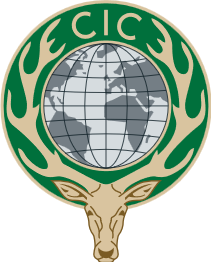History
A Century of Conservation
Beginnings
The origins of the International Council for Game and Wildlife Conservation (CIC) trace back to the early 20th century. The idea for an international hunting organization was first proposed in 1910 at a hunting exhibition in Vienna. This concept was revisited in 1926 by Professor Antonin Dyk of Prague University and was brought to life by the collaboration between French lawyer Maxime Ducrocq and Hungarian Count Louis Károlyi.
In 1928, the pivotal “Declaration of Nové Zamky” was made during an international conference in Slovakia, laying the groundwork for the creation of the “Conseil International de la Chasse” (CIC). Two years later, the CIC was officially founded during the first General Assembly in Paris in November 1930.
90 Years of Global Influence
For over 90 years, CIC has earned global recognition as an independent advisor on wildlife conservation. The organization has successfully advocated for sustainable use in international policy, and its influence has expanded to include support for the needs and rights of Indigenous Peoples and Local Communities (IPLCs).
The CIC has spearheaded numerous successful conservation projects, such as the reintroduction of the Takhi Wild Horse to Mongolia and the conservation of species like the Saiga antelope and the Houbara Bustard. Furthermore, CIC played a key role in the recognition of falconry as an Intangible World Cultural Heritage by UNESCO.
Supporting Conservation and Cultural Heritage
The CIC’s commitment extends beyond wildlife conservation to the preservation of cultural traditions connected to hunting. This holistic approach has allowed the organization to influence both environmental and cultural policies on a global scale, ensuring that conservation efforts are sustainable and respectful of local traditions.
Support our work by contributing to ongoing conservation efforts, or subscribe to our e-news to stay informed about CIC’s activities.
Timeline
- 1948: CIC founding member Harold Jefferson Coolidge Jr., a Harvard University scholar, plays a pivotal role in establishing the International Union for Conservation of Nature (IUCN), marking the start of the global conservation movement.
- 1971: CIC members are instrumental in the creation of the RAMSAR Convention on Wetlands, a landmark treaty focused on the conservation and sustainable use of wetlands worldwide.
- 1992: At the Earth Summit in Rio, CIC contributes to securing the landmark international agreement on the Strategy for Sustainable Development, embedding sustainable use into global environmental governance.
- 1993: CIC leads the successful reintroduction of the Takhi wild horse (Przewalski’s horse) to Mongolia, one of the most significant wildlife conservation success stories in the region.
- 1997: CIC provides technical expertise that lays the groundwork for the Addis Ababa Principles and Guidelines for the Sustainable Use of Biodiversity, strengthening the second pillar of the Convention on Biological Diversity (CBD).
- 2008: The European Charter on Hunting and Biodiversity is published in collaboration with CIC, creating a comprehensive framework for biodiversity regeneration and sustainable wildlife management across Europe.
- 2013: CIC is a founding member of the Collaborative Partnership on Sustainable Wildlife Management (CPW), an influential alliance of 14 international organisations dedicated to addressing issues ranging from wildlife management and food security to human-animal health and conservation.
- 2022: CIC plays a key role in providing input into the drafting of the Global Biodiversity Framework, which was adopted at the CBD COP15 in Montreal, setting the global agenda for biodiversity conservation through 2030.
